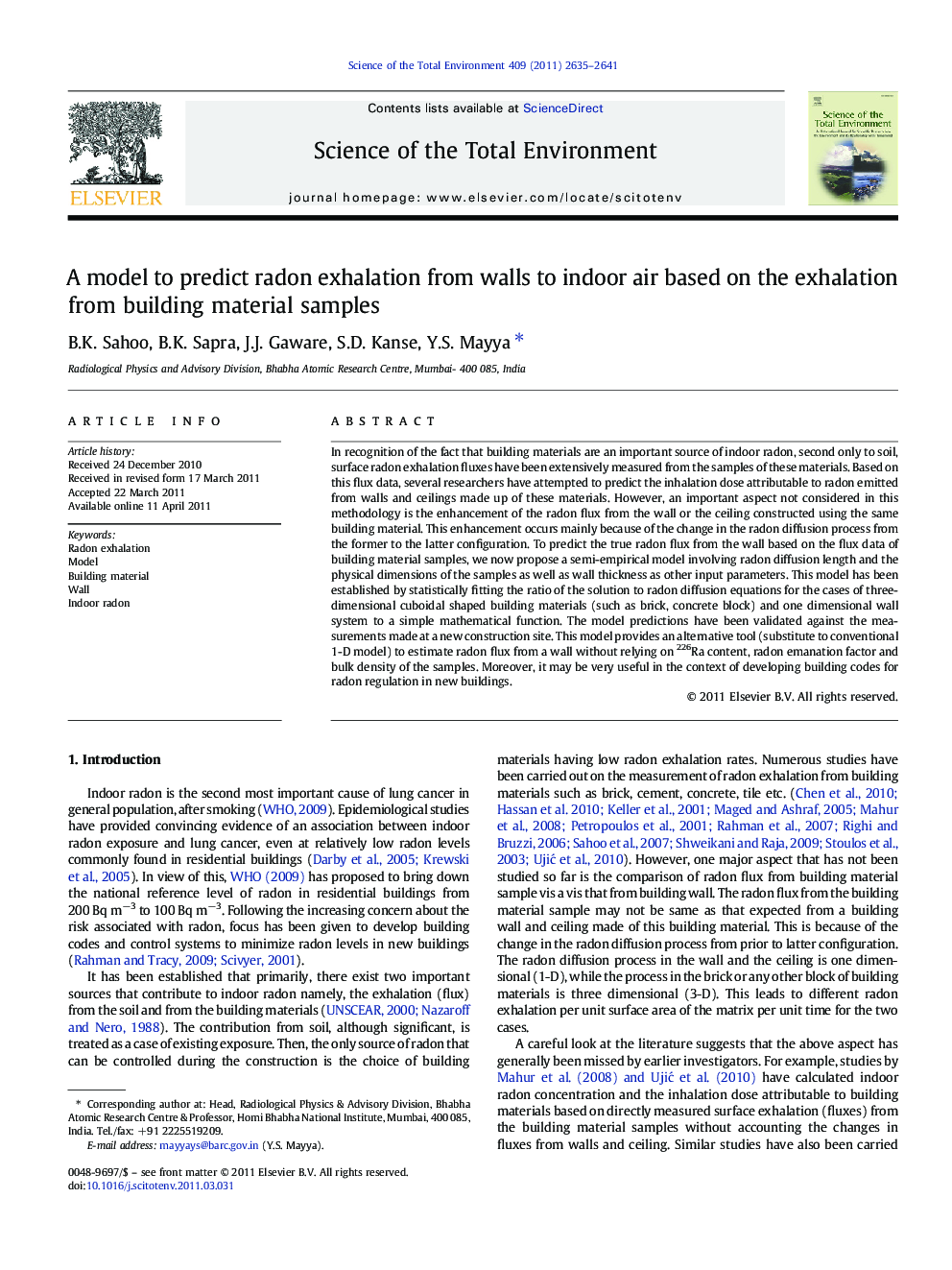| Article ID | Journal | Published Year | Pages | File Type |
|---|---|---|---|---|
| 4430148 | Science of The Total Environment | 2011 | 7 Pages |
In recognition of the fact that building materials are an important source of indoor radon, second only to soil, surface radon exhalation fluxes have been extensively measured from the samples of these materials. Based on this flux data, several researchers have attempted to predict the inhalation dose attributable to radon emitted from walls and ceilings made up of these materials. However, an important aspect not considered in this methodology is the enhancement of the radon flux from the wall or the ceiling constructed using the same building material. This enhancement occurs mainly because of the change in the radon diffusion process from the former to the latter configuration. To predict the true radon flux from the wall based on the flux data of building material samples, we now propose a semi-empirical model involving radon diffusion length and the physical dimensions of the samples as well as wall thickness as other input parameters. This model has been established by statistically fitting the ratio of the solution to radon diffusion equations for the cases of three-dimensional cuboidal shaped building materials (such as brick, concrete block) and one dimensional wall system to a simple mathematical function. The model predictions have been validated against the measurements made at a new construction site. This model provides an alternative tool (substitute to conventional 1-D model) to estimate radon flux from a wall without relying on 226Ra content, radon emanation factor and bulk density of the samples. Moreover, it may be very useful in the context of developing building codes for radon regulation in new buildings.
Research highlights► A model is proposed to predict radon flux from wall using flux of building material. ► It is established based on the diffusion mechanism in building material and wall. ► Study showed a large difference in radon flux from building material and wall. ► Model has been validated against the measurements made at a new construction site. ► Model leads to correct interpretation of building material flux with indoor radon.
